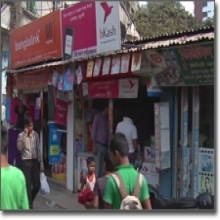- Read the full CGAP report, "Digital Financial Inclusion."
- Watch the 11-minute feature video produced by GPFI/CGAP for the conference, "Regulators Consider Benefits, Challenges of Digital Financial Inclusion."
President Kim's optimism is shared by the leaders of the G20 countries and the members the global financial sector standard-setting bodies (SSB) from over 50 countries that are committed to the financial inclusion agenda both globally and domestically.

Digital financial inclusion involves the deployment of the cost-saving digital means to reach currently financially excluded and underserved populations with a range of formal financial services suited to their needs that are responsibly delivered at a cost affordable to customers and sustainable for providers.
While the years of experience with digital financial services often give providers significant advantages, the particular risks introduced by the new services result from, among other things:

For the 2.5 billion adults who transact exclusively in cash due to lack of effective access to formal financial services, having digital access to financial services may be transformational. The benefits of digital financial inclusion for the financially excluded and underserved are the following, among others:

Customer uptake of digital financial services in many markets suggests that on balance these risks may not be perceived to outweigh the benefits of being financially included. Nonetheless, the case is strong for appropriate regulation and supervision.
The key regulatory issues raised by digital financial inclusion relate to agents, anti-money laundering and countering financing of terrorism (AML/CFT) rules, regulation of e-money, consumer protection, payment system regulation, and competition. Many of these issues fall within multiple regulators' competencies, requiring effective communication and collaboration among them.
The models of digital financial inclusion emerging in countries around the world introduce new market participants and allocate roles and risks (both new and well known) differently from the traditional approaches to retail financial service delivery. Some risks are common to most or all approaches to digital financial inclusion. The engagement of mobile network operators (MNOs), whether as e-money issuers or as a channel for a bank or similar provider, presents certain potential risks that differ from approaches without MNOs. Some risks are triggered by the model of the digital transactional platform in question. Finally, some risks relate to the provision of additional financial services beyond the payments, transfers, and value storage services offered by the digital transactional platform itself.